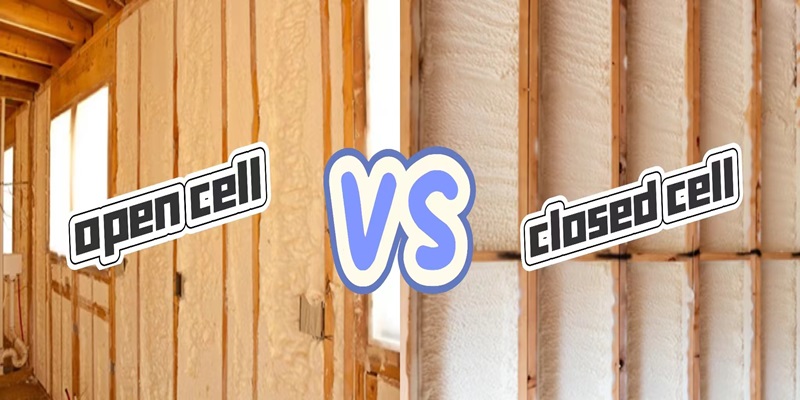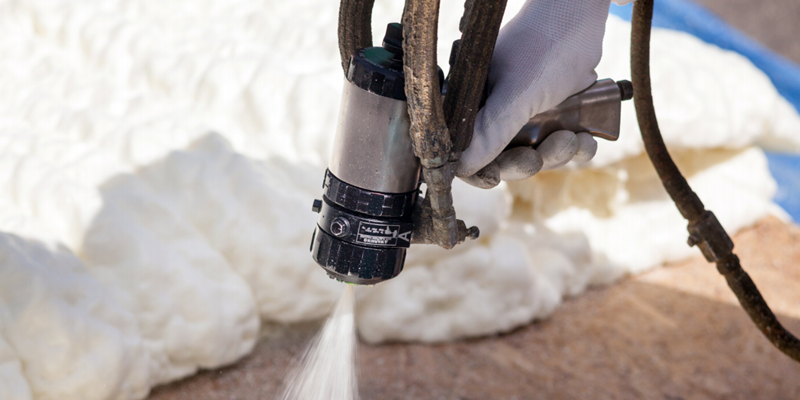Sprayed polyurethane foam (SPF) roofing has become popular and a choice for commercial and residential buildings, especially for roofing applications. SPF roofs consist of a layer of polyurethane foam sprayed onto the surface of the roof, which then expands and hardens to form a seamless, durable and highly insulated protective layer. This type of roof has excellent energy saving, water resistance and long lasting properties.
The SPF roof system consists of A mixture of two ingredients, isocyanate (component A) and polyol (component B), and is used under high pressure and temperature. The two chemicals are stored in separate containers and transported through a high-pressure hose to a mixing gun, where they are heated to about 115-130°F. When sprayed, they combine and react to quickly form a strong, lightweight, and fully bonded roof layer. SPF roofs provide excellent insulation, prevent water penetration, and extend the life of the roof by forming a strong barrier against wear and environmental damage.
Types of Spray Polyurethane Foam: Open-Cell vs. Closed-Cell
Modern SPF roofing materials are divided into two main types: open-cell and closed-cell foam, each with unique properties that cater to different roofing and insulation needs.
1. Closed-Cell Foam: This denser rigid foam is primarily used in commercial roofing applications. Closed-cell foam has a higher R-value (thermal resistance rating) than open-cell foam, which means it has better thermal insulation. It is resistant to water absorption, making it ideal for external applications where durability and water resistance are critical. Closed-cell foam provides excellent structural support and can increase the rigidity of the roof surface, thereby enhancing the overall strength of the roof.
2. Open-Cell Foam: This lighter, less dense foam is typically used for indoor thermal and acoustic insulation, rather than outdoor roofing. Compared to closed-cell foam, open-cell foam is flexible and has a lower R-value, but is more cost-effective and can fill larger Spaces, making it suitable for indoor insulation. Although open-cell foam is not as waterproof as closed-cell foam, its sound insulation properties are valued and therefore commonly used for walls and ceilings in residential and commercial environments.
Closed-cell foam is often used in SPF roofs because of its durability, insulation, and ability to withstand harsh outdoor conditions. The A and B components of SPF are mixed on site and applied directly to the roof using specialized spray foam equipment. Ensuring proper heat and pressure during installation is critical to achieving a uniform and effective SPF layer.
Is Spray Polyurethane Foam Safe?
A common question about SPF roofs is their safety, especially the potential health effects of the chemicals involved in foam production. In general, polyurethane foam itself is non-toxic, but some of the additives used in its production may cause concern. For example, environmentalists sometimes question the safety of SPF because of the addition of certain blowing agents and flame retardants that release volatile organic compounds (VOCs).
Blowing agents and flame retardants in some SPF formulations may release VOCs, resulting in high global warming potential (GWP) and, in some cases, possible health effects if not managed properly during application. High levels of VOC can cause injury if inhaled during installation, so strict safety protocols must be followed, including the use of proper ventilation and personal protective equipment (PPE).
Our polyurethane catalysts, such as MXC-5 and MXC-8, play a role in these additives to optimize the reaction process and improve foam stability and performance. While the inclusion of these agents is necessary to ensure the functionality and durability of SPF, there is increasing focus on low-VOC options to minimize potential health risks and environmental impacts. The use of low-VOC chemicals in the production of SPF can help reduce exposure to harmful exhaust gases and minimize occupants’ allergic reactions and other health risks after installation.
Ensuring Safe Application and Long-Term Safety of SPF Roofing
The safety of SPF largely depends on proper handling during the installation process. Trained professionals should install SPF roofing, ensuring that the chemicals are adequately mixed and applied to minimize VOC release and ensure the best possible performance. Protective measures during application, including masks and ventilation, are crucial for workers to avoid inhaling any fumes during the spraying process.
Once the SPF has cured and hardened, it becomes inert and does not release VOCs, making it safe for occupants. SPF roofing can provide years of safe, reliable insulation and waterproofing for buildings when appropriately installed, and low-VOC formulations further enhance its environmental safety.
Conclusion
Spray polyurethane foam roofing is a highly effective and versatile solution for commercial and residential buildings, offering superior insulation, durability, and energy efficiency. By understanding the types of SPF and their applications, as well as implementing safe installation practices, building owners can benefit from the advantages of SPF roofing without compromising health or environmental standards. Low-VOC SPF options and advances in polyurethane catalyst technology continue to improve the sustainability and safety profile of SPF roofing, ensuring it remains a viable choice for eco-conscious building practices.
Post time: Nov-07-2024


